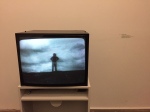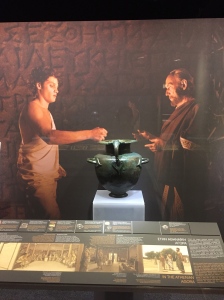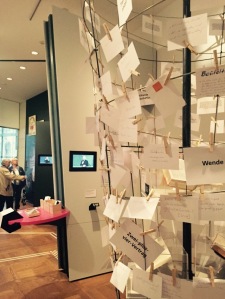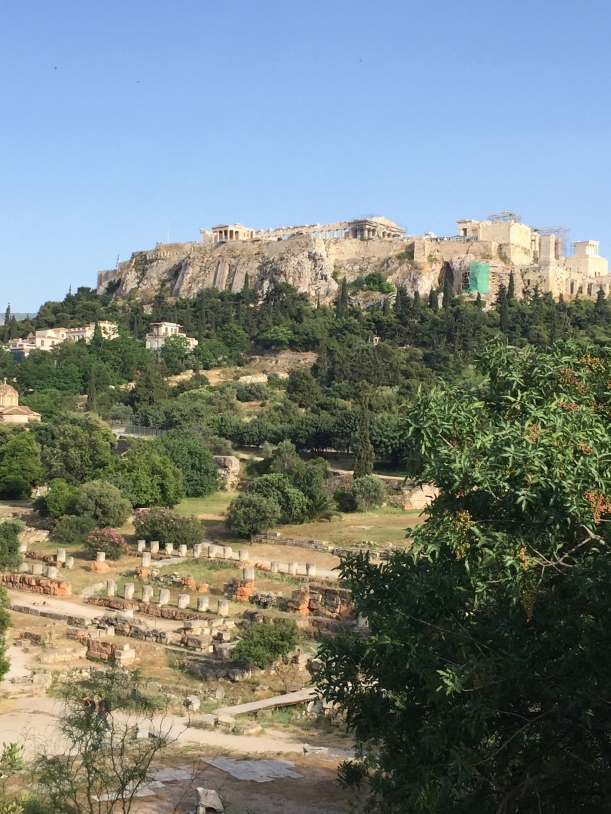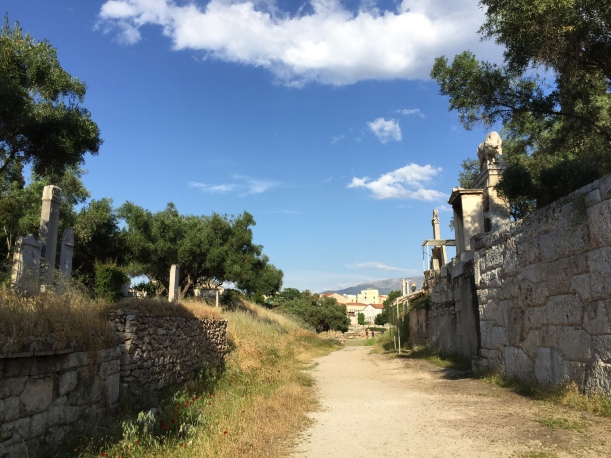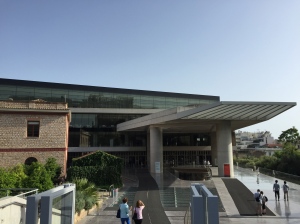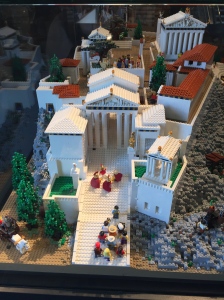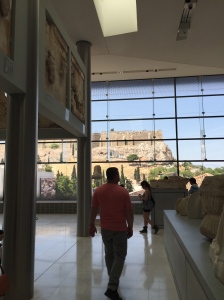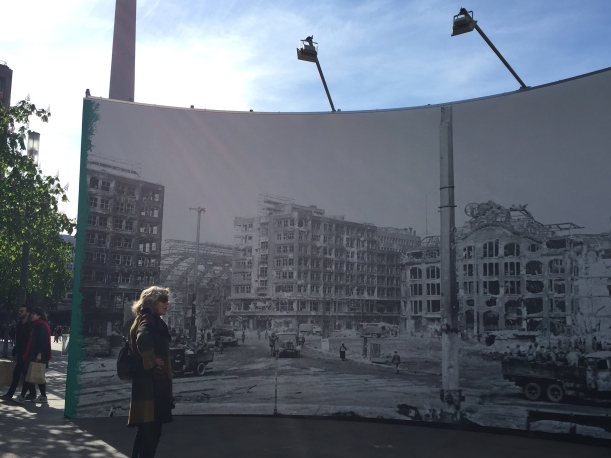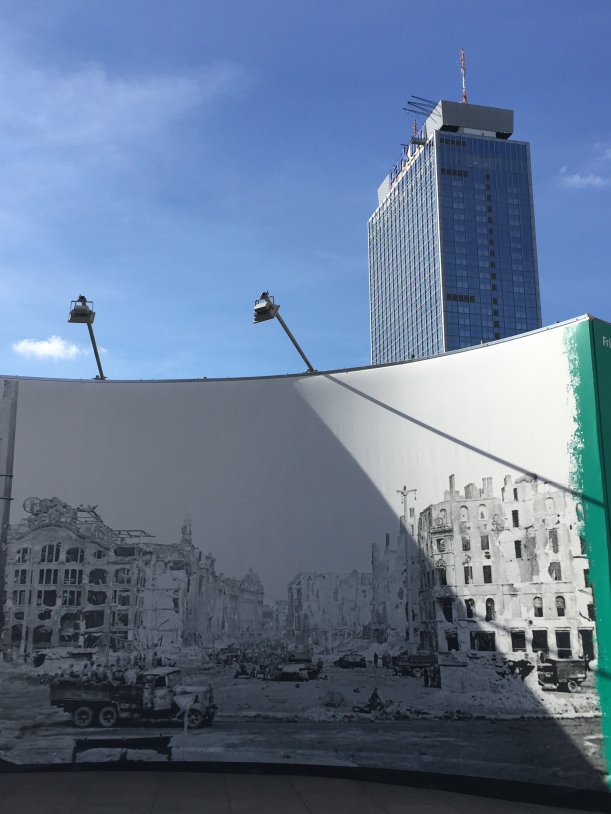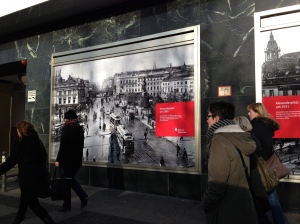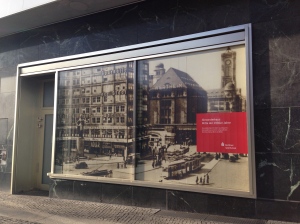Im Sommer 2016 waren wir auf Teneriffa und – natürlich – besuchten wir dann auch mal das Archäologische Museum der Insel. Beziehungsweise: das Archäologische und Naturhistorische Museum, denn das ist sein Name und auch der Inhalt des wunderschönen Gebäudes in Santa Cruz de Tenerife. Und obwohl das nun schon lange her ist, würde ich diesen Beitrag nun doch auch mal publizieren, weil auch 2020 das Museum immer noch sehr wenige Informationen online hergibt. Für interessierte Besucher schade – vielleicht findet der ein oder andere ja hier Input für einen Besuch. Es scheint immer noch (wie damals) in der Restaurierungsphase zu sein, wenn man den Googlekommentaren glauben kann – das als Disclaimer. Evt. hat sich ja was in den letzten 4 Jahren geändert?
Es liegt im so genannten “Historischen Kern” der Stadt, der etwa 3 Straßen groß ist. Wunderbar restauriert, mit eigener Museums-App die man gratis im gratis WLan des Museum runterladen kann – klimatisiert und mit einem wunderschönen begrünten Patio. Eigenes Café mit Lichthof, engagierte Mitarbeiter und mini Museumsshop inklusive. Generell also, wenn man das Museum so betritt – ein positiver Eindruck. Also gingen wir auch positiv gestimmt in die archäologische Abteilung, die sich über einen Teil zweier Stockwerke erstreckt. Und wir hatten als ausländische Archäologen viele viele Fragen im Gepäck. Zum Beispiel: wer waren denn nun die Einwohner Teneriffas vor Ankunft der Spanier um 1490? Seit wann ist die Insel überhaupt besiedelt? Woher kamen sie, wie lebten sie, welche archäologischen Funde gibt es? Was sagen diese aus? Und was passierte dann nach Ankunft der Spanier? Also: Fragen über Fragen. Leider wurde keine davon beantwortet. Und das kam so:
Das Museum ist ganz offensichtlich mit viel viel Geld auf einen neuen Ausstattungs-Stand gebracht worden, vermutlich vor einigen Jahren. Es ist nicht nur komplett restauriert und sieht taufrisch aus, es hat auch die neuesten Ausstellungsgadgets wie fantastische Vitrinen, eingebaute QR-Codes, die sehr umfassende App, dazu Videos, angenehme Sitzmöglichkeiten, zusätzliche Aufsteller undundund. Alles sieht funkelnagelneu aus und funktioniert blendend. Das ist an sich schon mal fantastisch. Leider hält sich die Ausstattung nicht die Waage mit dem Informationsgehalt der archäologischen Abteilung.
Fast alle Themen werden hier nur angerissen, sowohl was die Besiedlung als auch die Lebensweise der vorspanischen Bevölkerung betrifft. Sowohl zu Teneriffa als auch zu den anderen Inseln gibt es kurze Ausstellungssegmente mit Dioramen, Fotos und Text, die aber so kurz und unspezifisch gehalten sind, dass mehr Fragen offenbleiben als beantwortet werden. So erfuhren wir, dass es römische Amphorenfunde gäbe. Aha. Auch phönizische Funde gäbe es. Aha. Was das aber nun im Endeffekt bedeuten soll, blieb offen. Sind die Bewohner der Kanaren oder spezifisch Teneriffas also nun also phönizischer Abstimmung? Römischer? Waren sie vielleicht sogar schon vorher da? Keine Information.
Ähnlich läuft es bei der Vorstellung der vorspanischen Besiedlung der einzelnen kanarischen Inseln. Wir erfahren, dass jede Insel offensichtlich eigene Qualitäten besaß: auf einigen wurde Landwirtschaft betrieben, auf anderen Jagd und Sammelwirtschaft, andere betrieben Weidewirtschaft. Warum diese Unterschiede? Keine Antwort. Warum gab es keinen Kontakt zwischen den Inseln oder gab es den doch? Immerhin liegen sie teilweise in Sichtweite voneinander? Keine Antwort.
Nun denn, schauen wir doch mal ob wir erfahren können ab WANN die Insel besiedelt wurde. Nachdem wir das gesamte Museum durchforstet hatten, kann ich sagen: es gibt offensichtlich keine einzige Datierung zu all den Befunden. Weder C14 noch Thermolumineszenz. Nichts. Wir tauften es daher unter uns “Das Museum ohne Datierungen”. Kurze Hoffnung keimte auf als wir in die paläoanthropologische Abteilung traten. Komplett inklusive abgetrenntem Raum für die Mumienfunde, die mit viel Dezenz dargebracht werden. Also auch hier wieder: ausstellungstechnisch wunderbar! Nur eben leider: informationslos. Ich zitiere hier mal lose aus den Texten der Ausstellung: “Die Paläoanthropologie kann uns viel erzählen über die Herkunft der Bewohner. Auch Krankheiten, Ernährung und andere Themen können wir aus den Knochen ablesen.”. Das ließ uns hoffen, dass wir die hier so schön angeschnittene Info dann auch im nächsten Satz, auf der nächsten Tafel erhalten würden. Leider nein. Zwar zeigen uns die Ausstellungsmacher was möglich WÄRE, aber anscheinend hat noch niemand die Daten hierzu erforscht. Ähnlich ergeht es einem bei den Steinzeichnungen und -ritzungen.
Nachdem man also die gesamte archäologische Abteilung besucht hat, weiß man einiges über die Möglichkeiten archäologischer Forschung. Man weiß auch, was es so ansatzweise für Funde gibt, nur eine kohärente Idee zur Besiedlung der Insel hat man nicht. Auch die Integration der erhaltenen Sammlungsschenkungen macht die Sache nicht besser, denn man sieht zwar viele tolle Objekte aus den Sammlungen, erfährt aber nur minimal etwas über den ursprünglichen Sammlungsbesitzer. Auch der Fakt in welchem Kontext diese Sammlungen ins Museum kamen hätte mich brennend interessiert – aber vielleicht ist das zu kontrovers.
Wirklich schade, aber ein wunderschönes Museum verkauft sich hier absolut unter Wert durch so wenige Informationen. Warum werden hier so viele Dinge ausgelassen? Ich wäre schon mit einem “Wir können es nicht genau sagen, weil...” zufrieden. Auf die seltsame Präsentationsart des Museum sieht es aber so aus als ließe man Ideen, vor allem Interpretationen, absichtlich aus. Römische Funde werden so nicht interpretiert als “römische Abstammung”, sondern stehen dann eben bezugslos im Raum und werden nirgends mit einer eventuell bestehenden Theorie oder Interpretationsmöglichkeit verknüpft. Warum? Folgt das einer generellen Maxime, da sich das Problem ja durch die gesamte Ausstellung zieht? In der Masse der Ausstellung wirkt es tatsächlich so als würden Interpretationen hier absichtlich ausgespart. Und wenn man so ein Gefühl hat, stellt sich ja die Frage: Warum wird hier etwas ausgelassen? Dazu möchte ich gar nichts weiterdenken. Vielleicht besuche ich es noch einmal, sollte ich jemals wieder auf Teneriffa unterwegs sein.
English Version: The Museum of Omissions.
In the summer of 2016 we visited Tenerife and – of course – we also visited the archaeological museum of this island. Or, as it is called correctly: the Museum of Archaeology and Natural History, because that’s the official name and also the content of the beautiful building in Santa Cruz de Tenerife. And although that’s now almost 4 years since we visited, I decided to post my thoughts and impressions here because even now, in 2020, the museum lacks much information online – so maybe it would be of some help to interested people who´d like to visit it. It is (still ongoing, apperatenly, and judging from the comments on Google) in renovation and I don´t know how much the contents may have changed in the last 4 years. So,thats my disclaimer and now: Here we go!
The museum is located in the so called „historical centre“ of the city, which comprises about 3 blocks. It has been fabulously restaurated, with its own museum app that you can download for free in the free WIFI of the museum. It has its own air condition and a wonderful patio with plants and a garden. An own café, incredibly motivated people who work there and a small but nice giftshop. So, when you enter the museum, the overall effect is quite positive and you feel welcome. So we went positively at the archaeological exposition, located in the bigger part of two storeys. And we had – as foreign archaeologists – a whole lot of questions we would have liked to be answered. I.e.: who were the native inhabitants of Tenerife before the arrival of the Spaniards at around 1490? Since when has the island been habitated? And by whom? Where did the pre-hispanic people come from, how did they live, which findings have been made? And what can they tell us about the people? And what happened after the Spanish people arrived? So: a whole lot of question Unfortunately, not one of them was answered, and here´s why:
The museum has obviously been renovated (or is still being renovated in parts) with an astounding amount of money and has been brought to the state-of-the-art level of exposition today. It is not only completely refurnished and looks like new, it has also the newest gadgets of exposition making: fantastic displays, QR-codes, the really impressing museum app, and there´s more: videos, really nice options to have a seat, additional information material etc etc. Everything looks new and runs smoothly. That in itself is an achievement! But unfortunately the amount of information of the archaeological exposition doesn’t relate to the same level of top of the art investment.
Almost all the issues are being treated in the exposition, if it’s the process of settlement or the lifestyle of the prehispanic inhabitants. There are displays on Tenerife and the other canaries islands – but the information is so short and unspecific, that our questions were not really answered. We read that there have been findings of roman amphorae. Okay. And Phoenician ones. Okay. But what does this mean? So, are the inhabitants of the canaries, or specifically Tenerife roman? Phoenician? Have they been on the island before? No information, just a blank space.
Its similar when it comes to the presentation of the prehispanic settlement history oft he different islands. We get to know that each island had obviously different qualities – some were into agriculture, others were big into hunting & gathering, other did grazing and herds. But why these differences? No answer. Was there contact between the Islands? No answer.
Well, then lets have a look at the timeline of settlement. After searching the whole museum, its clear, that there is obviously NO dating for all the finds. Theres no C14 or thermoluminescence date? Nothing? We called it „The museum without dating“ afterwards. There was a short moiment of hope when we got into the paleoanthropolgical rooms. A room, completely shut off from the rest of the museum, for the mummies, so you could visit them wuith due respect and decency. Asgain – good work on the museological side but so few information….
But again: no information. Citing here loosely from the texts in the exposition: „Paleoanthropology can tell us a lot about the provenance oft he habitants. Also, there´s information on maladies, nutrition and other issues that we can read in the bones….”. So we hoped to get the promised information in the next display or the next room, but there was nothing to have. The exposition makers gave us a bit of hope but no information. Maybe nobody has researched these data yet? It went similar with the room on stone carvings and engravings.
So, after visiting the whole archaeological exhibition, you´ll know a lot about the possibilities of archaeological research. And you´ll have a great impression of the findings on Tenerife – but you won´t have a coherent idea on the settlement of the island. The integration of donations into the museum didn’t make it better because you see showy objects that have been donated, but next to nothing about the donating person or the aspects under which the findings were made. But maybe this is too controversial?
It´s really sad, but an absolutely beautiful museum seems to be wasting its possibilities by presenting so few information. Why are there so many omissions? I´d be perfectly happy with something like: “we can´t say this with certainty because…”. But due to the strange way of presentation its seems that the omissions are being made with purpose. Why? Is this a general problem, because its present in the whole museum? Being presented en masse it seems as if interpretation would be left out on purpose, focussing on presenting finds without interpreting them. Why? And if such a feeling pops up, then the question follows: Why are the omissions being made? I don’t like to think further ahead of this. Maybe I should visit again if ever I come back to Tenerife.

